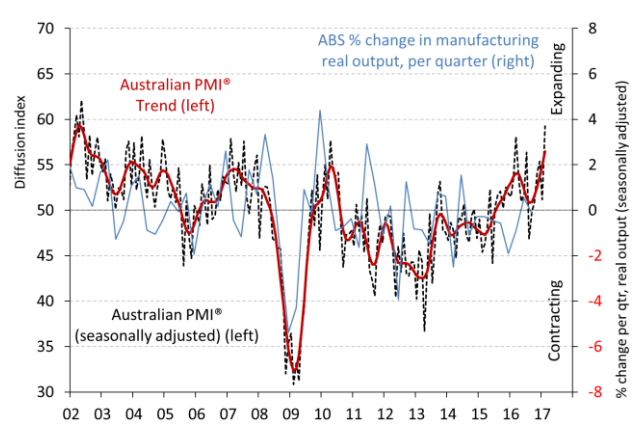
The Australian Performance of Manufacturing Index (PMI) has registered its eight consecutive month of expansion in May, albeit at a considerably slower rate than in April.
According to Ai Group’s report, the pace of expansion in May dropped by 4.4 points to 54.8, primarily due to ‘slower local retail conditions’ and ‘elevated input costs’.
The report found that all seven activity sub-indexes in the Australian PMI expanded in May, with seven of the eight manufacturing sub-sectors also posting positive results which exceed the 56 points mark.
The textiles, clothing & furniture sub-sector was the only one that remained in contractionary territory having slipped further 2.7 points to 39.4.
The input prices sub-index slipped 6.0 points but remained in expansion (63.8), while wages elevated a further 3.0 points to 61.4.
The selling prices sub-index registered a fifth consecutive month of expansion in May (down 2.7 points to 56.2), reflecting inflationary conditions but also indicating some relief to manufacturers in being able to pass on more of their cost increases.
Commenting on the readings, Ai Group Chief Executive, Innes Willox, said:
“Manufacturers reported further gains in May building on growth in the previous seven months. Demand is relatively elevated for most sub-sectors and employment, sales and new orders are all growing, albeit at more subdued rates. Exports remain a key source of growth with many manufacturers strongly focused on growing their sales overseas despite stiff global competition,” he explained.
“Regardless of the shrinking local auto industry and generally low business investment, the important machinery and equipment manufacturing sub-sector again built on what has been an impressive recovery after an extended slump. Less positively, slower local retail conditions are having some negative impacts for manufacturers and elevated input costs are an ongoing challenge for everyone, particularly due to rising electricity and gas costs.”



















